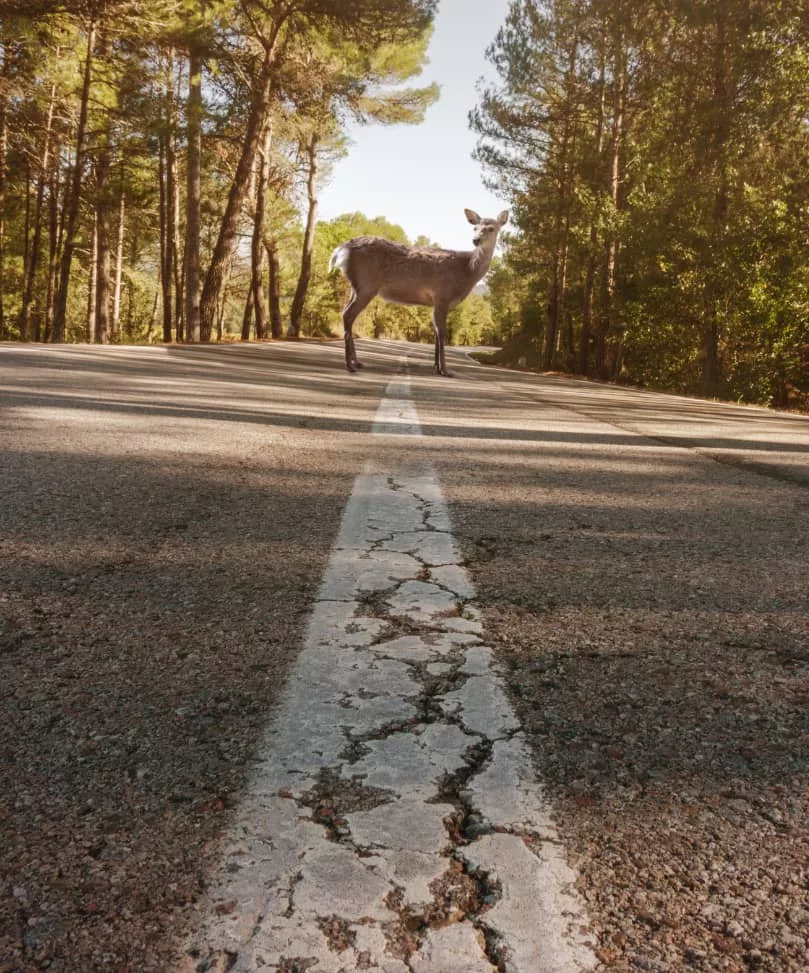As wildlife move around their habitat for food, shelter and to find mates, the roads and highways that crisscross our state make that a dangerous and sometimes fatal journey. According to Oregon Department of Transportation’s (ODOT) carcass collection records, each year in Oregon, approximately 5,000 large-bodied animals are killed in wildlife-vehicle collisions. The actual number of wildlife lost to collisions with vehicles is likely much higher as some die outside the highway right-of-way and aren’t included in ODOT’s carcass count.
Wildlife-vehicle collisions are dangerous for people too. On average, one to two motorists will lose their lives to collisions or near misses with wildlife each year in Oregon. Finally, damage to private and public property as a result of wildlife-vehicle collisions and accident avoidance numbers in the tens of millions of dollars annually.
Coalitions have sprung up around Oregon to address wildlife-vehicle collisions. A press conference was held online on Sept. 18 to discuss three specific projects and give the public a closer look at the developmental stages of wildlife passage projects. Media were invited to learn about three such projects – the Wallowa County Wildlife Crossing Project in NE Oregon on Highway 82, the Bend to Suttle Lake Wildlife Passage Initiative in central Oregon on Highway 20, and the Palensky Wildlife Underpass Project just north of Portland on US Highway 30. Each project is at an advancing stage of completion: phase 1; mitigation analysis/conceptual design, phase 2; engineering design and phase 3, construction.
This event was hosted online by Oregon Wildlife Foundation (OWF). It featured OWF Executive Director Tim Greseth, 6Ranch Owner and Wallowa County Coalition member Liza Jane McAlister, Central Oregon LandWatch Wild Lands & Water Program Director Jeremy Austin, and ODFW Wildlife Connectivity Coordinator Dr. Rachel Wheat. Each spoke as part of the conference.
“The Foundation was pleased to host this annual preview of how we’re putting the funds from the sale of our Watch for Wildlife license plates to work for wildlife conservation in Oregon,” said Greseth.
Wallowa County Wildlife Crossing Wildlife Project
OWF is a financial supporter and the fiscal sponsor for the Wallowa County Wildlife Crossing Project. The coalition behind this effort includes local organizations, state, and federal agencies all focused on reducing wildlife-vehicle collisions along Highway 82, between the towns of Enterprise and Wallowa.
“This section of Highway 82 has the highest density of wildlife-vehicle collisions in the NE region,” said Greseth. “The Coalition has raised the funding needed to hire a contractor team that will conduct a wildlife crossing mitigation analysis and develop conceptual designs for wildlife crossing structures at up to 10 preferred locations within this corridor.”
Bend to Suttle (B2S) Lake Wildlife Passage Initiative
OWF is a financial supporter and the fiscal sponsor for the B2S Wildlife Passage Initiative, led by Central Oregon LandWatch and backed by a coalition of local organizations, state and federal agencies. This section of Highway 20, between Bend and Suttle Lake, has the highest frequency of wildlife-vehicle collisions anywhere in Oregon, with 350-600 deer and elk killed by vehicles every year. A contracting team recently completed a wildlife crossing mitigation analysis and a conceptual design report for passage structures at preferred crossing locations within this Highway 20 corridor. The coalition is now fundraising for the next phase of this project: engineering design for four passage structures: four overpasses and an underpass. Visit www.bend2suttlelakepassage.org/ for more detailed information about this project.
Palensky Wildlife Crossing Project (Hwy 30, 2 miles north of Linnton)
The Columbia Estuary Study Taskforce (CREST) is the lead for this almost completed wildlife passage structure for red-legged frogs near the Palensky Wildlife Area on Highway 30, just north of Portland. This project is expected to be completed in October with anticipated use by red-legged frogs and other amphibians beginning immediately. The Oregon Department of Fish & Wildlife will be monitoring the use of the structure by amphibians and other wildlife in the near term. The Foundation contributed capital from the Watch for Wildlife Fund to support this project.
If you would like to support habitat connectivity and passage projects for wildlife in Oregon, you can purchase a Watch for Wildlife specialty license plate or make a tax-deductible donation to our Watch for Wildlife Fund. Check out our wildlife movement page at www.myowf.org/wildlifemoves for more information and other ways to get involved.
Oregon Wildlife Foundation
Oregon Wildlife Foundation is an operating charitable foundation dedicated to increasing private and public funding support for wildlife conservation projects in Oregon. Since its founding in 1981, the Foundation has directed tens of millions of dollars in private and public support to a broad range of projects throughout Oregon. For more information visit www.myowf.org.

